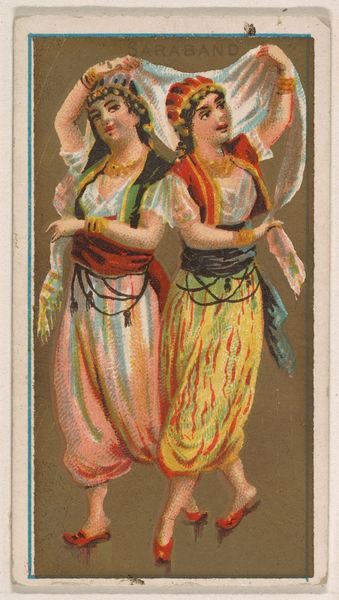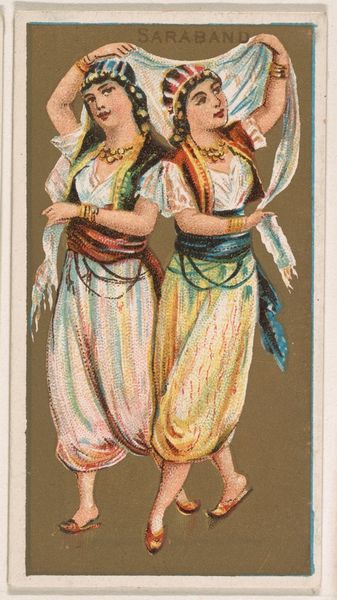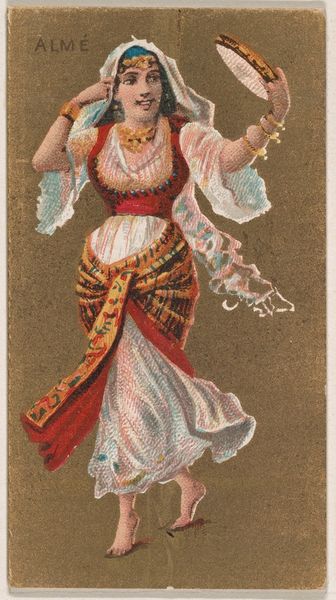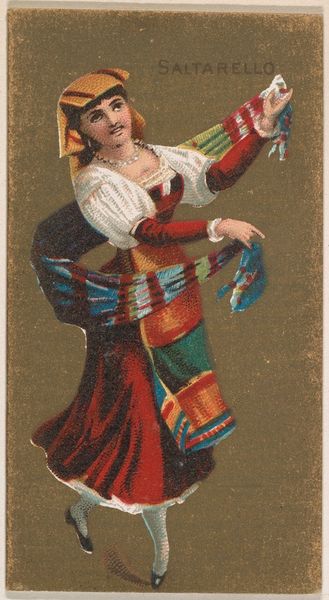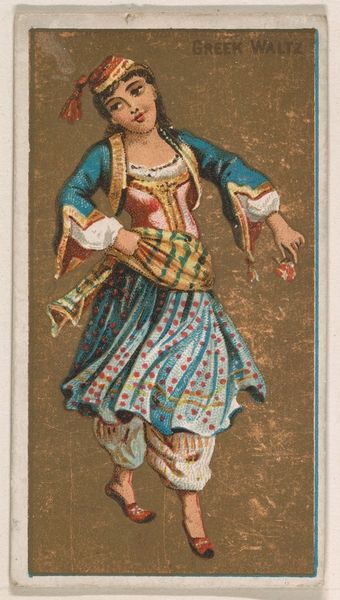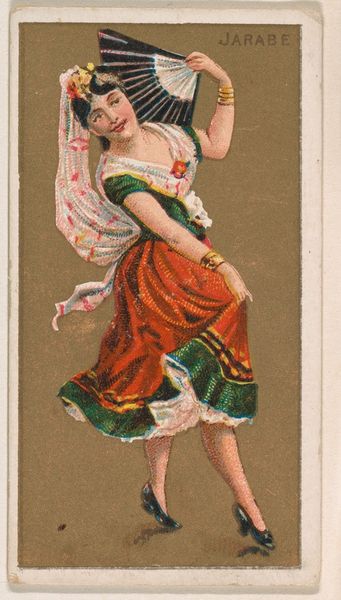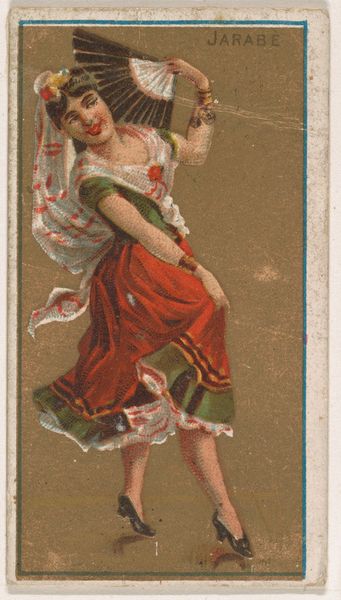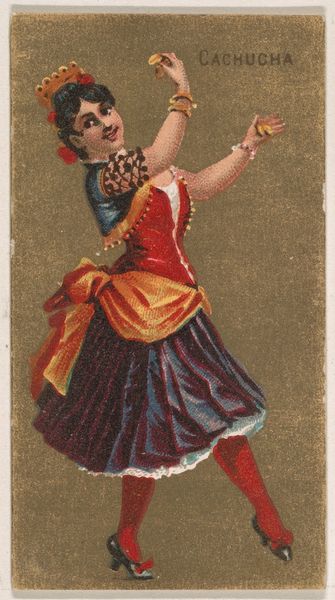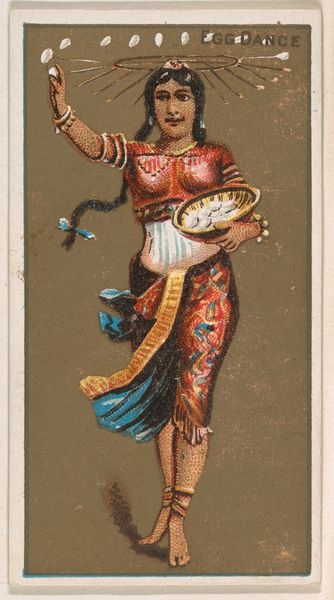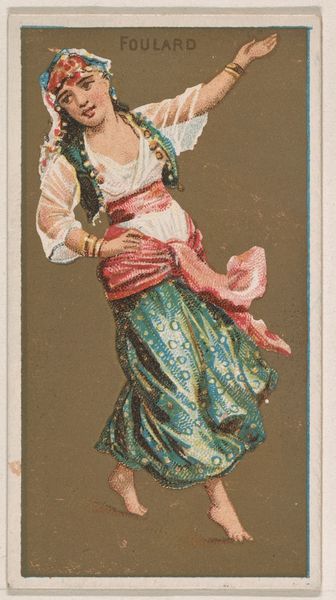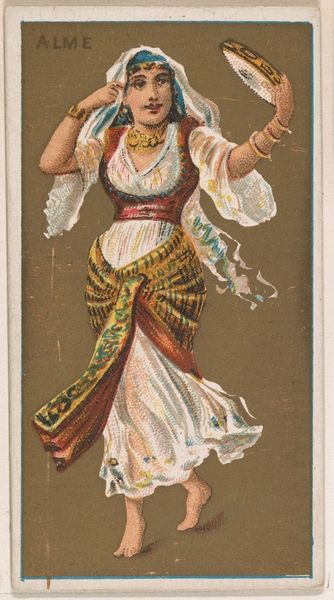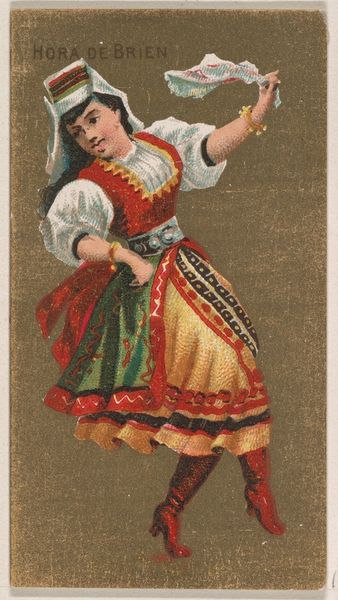
Saraband, from National Dances (N225, Type 2) issued by Kinney Bros. 1889
0:00
0:00
Dimensions: Sheet: 2 3/4 × 1 1/2 in. (7 × 3.8 cm)
Copyright: Public Domain
Editor: Here we have “Saraband, from National Dances (N225, Type 2)” issued by Kinney Bros. in 1889. It’s a colour print, seemingly made with coloured pencils, depicting two women. What strikes me is its naive style - almost like folk art - and the commercial context it was made in. What's your perspective on this? Curator: I see this as a fascinating intersection of material culture, advertising, and Orientalist fantasy. Consider the process: mass-produced prints used as premiums in tobacco products. The medium itself, a colour print, suggests accessibility and wide distribution. How does understanding its intended audience—primarily consumers of tobacco—shape your understanding? Editor: Well, knowing it was a tobacco insert changes things. It's not high art aiming for galleries; it's designed to be eye-catching and collectible within a consumer culture. Does this context cheapen the artwork in your opinion? Curator: Not at all! It complicates the high art/low art dichotomy. Kinney Brothers employed artists and printers. This labour contributed to both art and commodity production. The exoticization of "national dances" and figures, through its production and distribution, reflects the desires and cultural assumptions of consumers at that time. Look at how labour goes into even this seemingly simple image - the labour of the artist, the printer, even the tobacco worker and distributors. Editor: So it’s not just about the image itself, but also the complex system that brought it into being and how that fed into a cycle of exoticized cultural exchange and commercial promotion? I hadn't thought about all those levels of material process. Curator: Precisely. The "Saraband" print prompts us to question what we consider “art,” its value, and the cultural forces at play in its creation and consumption. This humble card opens up conversations far beyond its initial purpose. Editor: Absolutely. Thinking about the labourers and their position makes me question whose perspective we're seeing this "national dance" from. Thanks, that gives me a lot to consider. Curator: Indeed. It's a powerful reminder to look beyond the surface, examine the means of production, and to see art as deeply enmeshed within broader socio-economic contexts.
Comments
No comments
Be the first to comment and join the conversation on the ultimate creative platform.
